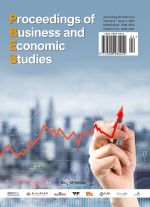Abstract
With the simultaneous growth of cultural heritage activation and urban renewal needs, urban heritage parks are increasingly becoming important carriers for the integrated development of historical heritage protection and public space utilization. This article focuses on the construction of measurement dimensions of tourist experience value in urban heritage parks. Based on the theoretical frameworks of flow theory and experience value theory, combined with literature analysis and UGC text mining, it initially constructs an emotional, cultural, and functional three-dimensional index system. Through text analysis of 970 online reviews of Chongqing Kaifa Heritage Park, social value is identified as a potential new dimension. Subsequently, this article adopts exploratory and confirmatory factor analysis methods to verify the structural validity and reliability of the evaluation model with four dimensions and eighteen indicators, confirming that tourist experience value consists of four dimensions: emotional, cultural, functional, and social. The research not only fills the empirical research gap on social interaction value in cultural heritage tourism spaces, but also provides a quantifiable evaluation tool and evidence-based basis for the operation, management, and experience optimization of heritage parks, which has certain theoretical innovation significance and practical guidance value.
References
Xi Y, Luo S, Han Y, 2024, Visual Analysis of Research Literature on National Archaeological Site Parks. Journal of Xi’an University of Finance and Economics, 37(3): 118–128.
Peng L, 2011, Research on Beijing Urban Archaeological Site Park, thesis, Beijing Forestry University.
Yao L, Ding H, 2021, Research on the Protection and Tourism Development of Urban Archaeological Site Parks Based on Cultural Confidence – Taking Xi’an Daming Palace Archaeological Site Park as an Example. Urbanism and Architecture, 18(3): 38–40.
Li Y, 2022, Research on the Spatial Narrative Design of Urban Archaeological Site Parks, thesis, Central China Normal University.
Hui Z, Yao Y, 2013, On the Openness of Urban Archaeological Site Parks. Modern Decoration (Theory), 2013(1): 153.
Chen L, 2023, Research on the Micro-Renewal Design Strategy of the Archaeological Site Park from the Perspective of a Park City – Taking the Nanjing Ming Palace Archaeological Site Park as an Example. Art Education Research, 2023(11): 112–114.
Sheth JN, Newman BI, Gross BL, 1991, Why We Buy What We Buy: A Theory of Consumption Values. Journal of Business Research, 22(2): 159–170.
Zhang F, You S, 2010, Dimensionality of Experience Value Structure: An Empirical Study Based on the Co-Manufacturing Organization Model. Wuhan University Journal (Philosophy and Social Sciences Edition), 63(3): 451–457.
Pine J, Gilmore J, 2002, The Experience Economy. Beijing: China Machine Press, Beijing.
Obenour W, Patterson M, Pedersen P, 2006, Conceptualization of a Meaning-Based Research Approach for Tourism Service Experience. Tourism Management, 27(1): 34–41.
Li Y, 2010, Research on Tourism Experience Design Theory. Yunnan Social Sciences, 2010(3): 124–126.
Huang J, Ma J, Xie X, et al., 2017, Dimensional Discrimination and Model Research of Tourist Experience Value Perception – Based on Content Analysis of Xinjiang Tourist Network Text. Consumer Economics, 33(2): 85–91.
Zeng Y, Gan M, Li S, et al., 2022, The Influence of the Maritime Silk Road Tourism Experience Value on Tourists’ Cultural Dissemination Behavior. China Eco-tourism, 12(4): 566–580.
Yang Y, 2016, Exploring the Structural Dimensions of Tourism Experience Value in Historical and Cultural Blocks – Taking Nanjing Historical Blocks as an Example. Chinese and Foreign Entrepreneurs, 2016(36): 249–251, 264.
Ma P, Zhang W, 2017, Research on the Relationship Between Tourist Interaction, Experience Value, and Subjective Well-being – An Empirical Test from the Perspective of a Homestay Resident. Consumer Economics, 33(5): 83–90.
Ross G, 1991, Tourist Destination Images of the Wet Tropical Rainforests of North Queensland. Australian Psychologist, 26: 153–157.
Tong Y, Yang J, Zhao Z, 2020, Exploring Customer Experience Value Factors of the Lushun Museum. Packaging Engineering, 41(18): 147–153.
Shi S, Huang X, Zhang M, 2021, Is Immersion Enough? – A Study on the Impact of Immersive and Meaningful Experiences on Tourist Satisfaction in Tourism Performances. Tourism Tribune, 36(9): 46–59.
Pi P, Liu X, Gao Y, 2016, Development of a Scale for Measuring Customer Experience Value in Tourism Destinations. Value Engineering, 35(24): 30–35.
Fan Y, Xie Y, 2017, Exploring the Connotation of “Experience” and the Attributes of Tourism Experience. Tourism Tribune, 32(11): 16–25.
Na M, Xie Y, Gursoy D, 2019, Experience Value in Tourism Destinations: Dimension Identification, Scale Development, and Validation. Tourism Tribune, 34(12): 48–60.
Li Y, 2019, Research on the Generation of Cultural Heritage Tourism Experience Value from the Perspective of Symbolic Interaction Theory, thesis, Northwest University.
Bai K, 2019, Chinese Tourism Development Forum – Protection and Tourism Utilization of Intangible Cultural Heritage. Tourism Tribune, 34(5): 1.
Li J, Wang Q, Zhu Z, 2020, Intangible Cultural Heritage’s Living Inheritance: Experience Value System, Measurement, and Examination. Tourism Tribune, 35(11): 78–89.
Dimensional Research on the Value of Cultural Tourism Experience of the Great Wall of Shanhaiguan, 2022, Economic Forum, 2022(08): 81–91.
Research on Tourism Experience of the Grand Canal Historical and Cultural District Based on Online Texts – Take the Historical and Cultural District of Qingmingqiao as an Example, 2021, Nanjing Social Science, 2021(02): 157–165.
Research on the Quality of Tourism Experience in Historical and Cultural Blocks From a Perspective – Take the Historical and Cultural Blocks of Jianghan Road and Zhongshan Avenue as Examples, 2021, Journal of Huazhong Normal University (Natural Science Edition), 55(01): 128–136.
